Artissima? Boring as hell. In Turin this year it was better to enjoy the sunshine
Unseasonable warmth, clear skies, twenty-one degrees Celsius in an unrecognizable late-October Turin, a full week of high pressure from Monday to Sunday and perhaps beyond that guarantees constant, determined, present, casual sunshine to make the city shine with a strange, shiny, different light, a light that as early as nine o’clock in the morning pummeled the fog rising from the Po to show everyone what color the Turin sky should be at this time of year. There is little to be cheerful about: effects of climate change. By a curious coincidence about which jokes are now superfluous, the weekend of the dead is also the weekend of art fairs. Between Halloween and the commemoration of the departed, give or take a day, Turin centralizes, thickens, draws in the art crowds, once only of contemporary art, now everyone, even those who buy old stuff and who for the past decade or so have been inaugurating the dances by swarming on Flashback, the first of the now five (five!) fairs that force art enforcers into Olympic-program marathons. Disciplines: Wednesday preview of Flashback. Thursday preview of Artissima and if there’s time left (or if you’re still not sufficiently drunk after seeing hundreds of works in a half afternoon), you drag yourself to some other opening, The Others or Paratissima depending on your mood. Friday varied program: one divides between GAM, OGR, MAO, PAV and other museums and spaces with acronyms that look like unions, or Gallerie d’Italia, or Palazzo Reale if however there is something, or to the Valentino for Apart and to take pictures of American gray squirrels, ranked among the hundred most invasive species in the world because they are infamous scavengers who flay trees by exposing them to disease and stealing nuts from native red squirrels. In between, those who have an invitation go to reverence Her Majesty the Sandretto, those who manage to find a ride on a swoop and ufo go as far as the Rivoli Castle, those who have half a day and are more inclined to antiquity board a regional for the classic trip to the Venaria. On Saturday and Sunday it’s back home because art is fine but those who make up the numbers go to look, save for the Christmas vacations and eventually buy the Ikea print.
But with this sun, this heat, this air, some people feel like standing in line to get inside a shed, some people feel like depriving themselves of the natural light ofa late October never before seen in the history of Turin to slip under the artificial lights of fairs and museums, some people want to give up leaving the city to breathe in the moods, smells and sweats of fair visitors? Those who look in from the outside and see cars lined up for the freeways should not be fooled (on Thursday, October 31, three quarters of an hour to go from Lingotto to Moncalieri at the time when everyone should already be attovagliati watching the evening news: more than four times the time actually needed under normal conditions). Don’t be fooled: motorists who don’t give a shit about “Art Week” as it’s fashionable to call it, and who rightly abandon the city for the bridge, are not the only ones willing to stand in line. As calm as possible. Flashback: usual huddle on Corso Lanza in front of the entrance to the former school where the fair has been catapulted for a few years now, making many regret the primal location. Last year Lampronti had brought a huge Canaletto, a few million euros the cost, and had been forced to shove it inside a small, narrow, inadequate hall. Good thing we then saw the Canaletto in other contexts. This year he brings things by Bellotto, a study by Annibale Carracci, a portrait by Greuze, and more: good thing we saw them at BIAF last month. Canesso gets one of the larger classrooms, so there is a suitable space to see Domenico Fiasella’s San Girolamo once belonging to the Marquis d’Invrea, one of the few interesting things in this edition of Flashback, along with not much else: some peasants by Bruegel the Younger at De Jonckheere’s booth (who had last been to Flashback when the fair was at the Pala Isozaki and probably remembered it differently), two compartments of a 15th-century altarpiece by Matteo Cesa of Belluno from Flavio Gianassi, a Cotignola tablet from Carlo Orsi, a curious Pigment Painting by Nicola Bolla from Photo&Contemporary, the paintings all priced by Floris Van Wanroij and CaputoColossi, i.e., the only two daredevils who went so far as to put the euro request tag next to name, title, dates, publications, provenance, sources (portable triptych by Adriaen Isenbrant and workshop at 240 thousand euros, spring landscape by Abel Grimmer at 95 thousand euros, living Jansenist wooden crucifix by Dutch sculptor at 12 thousand euros that costs almost as much as Luigi Ontani’s ceramic slippers - 14 thousand each- , Gino Severini’s Ballerina listed in the press kit as one of the highlights of the fair at 21 thousand euros).
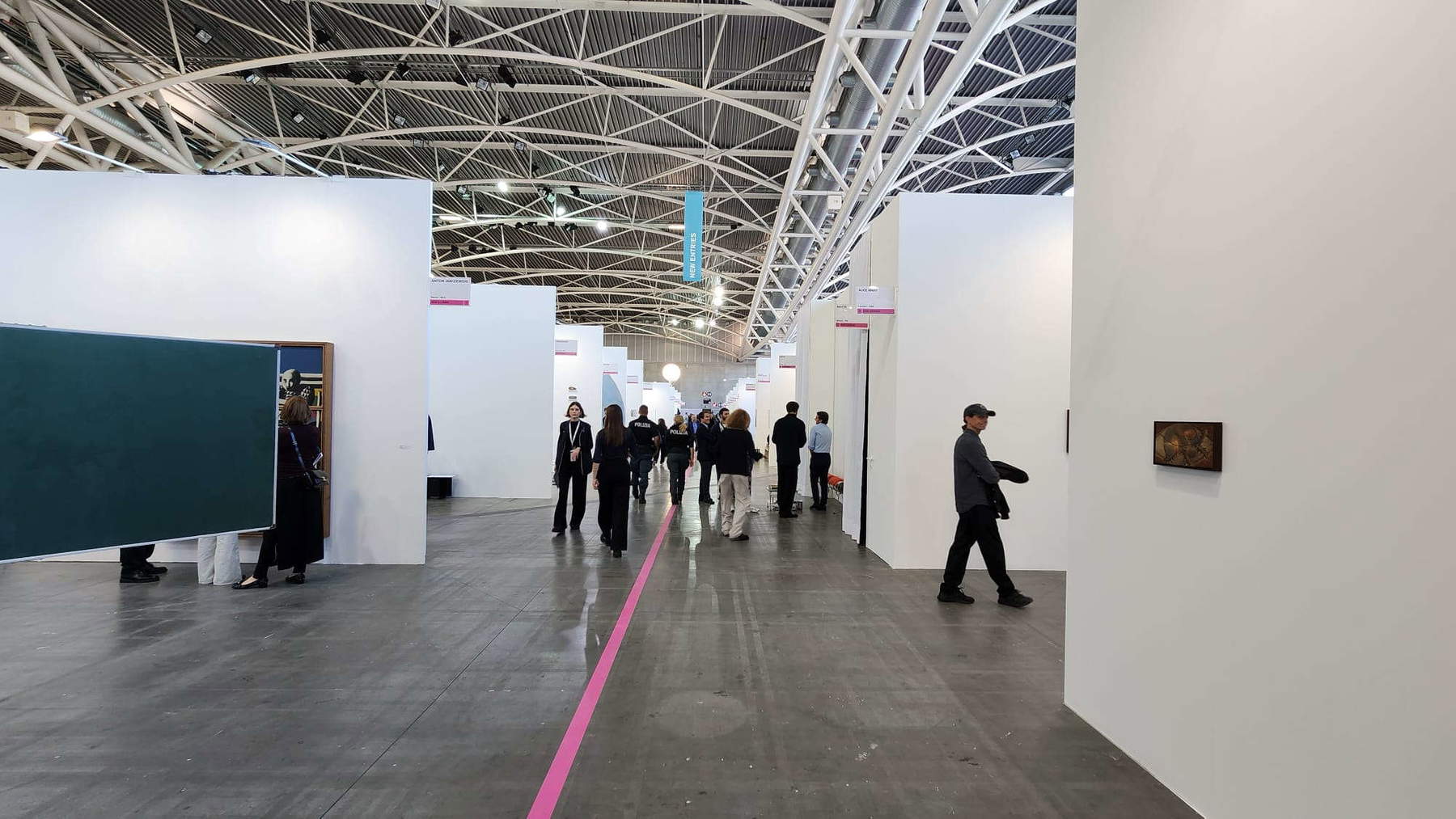
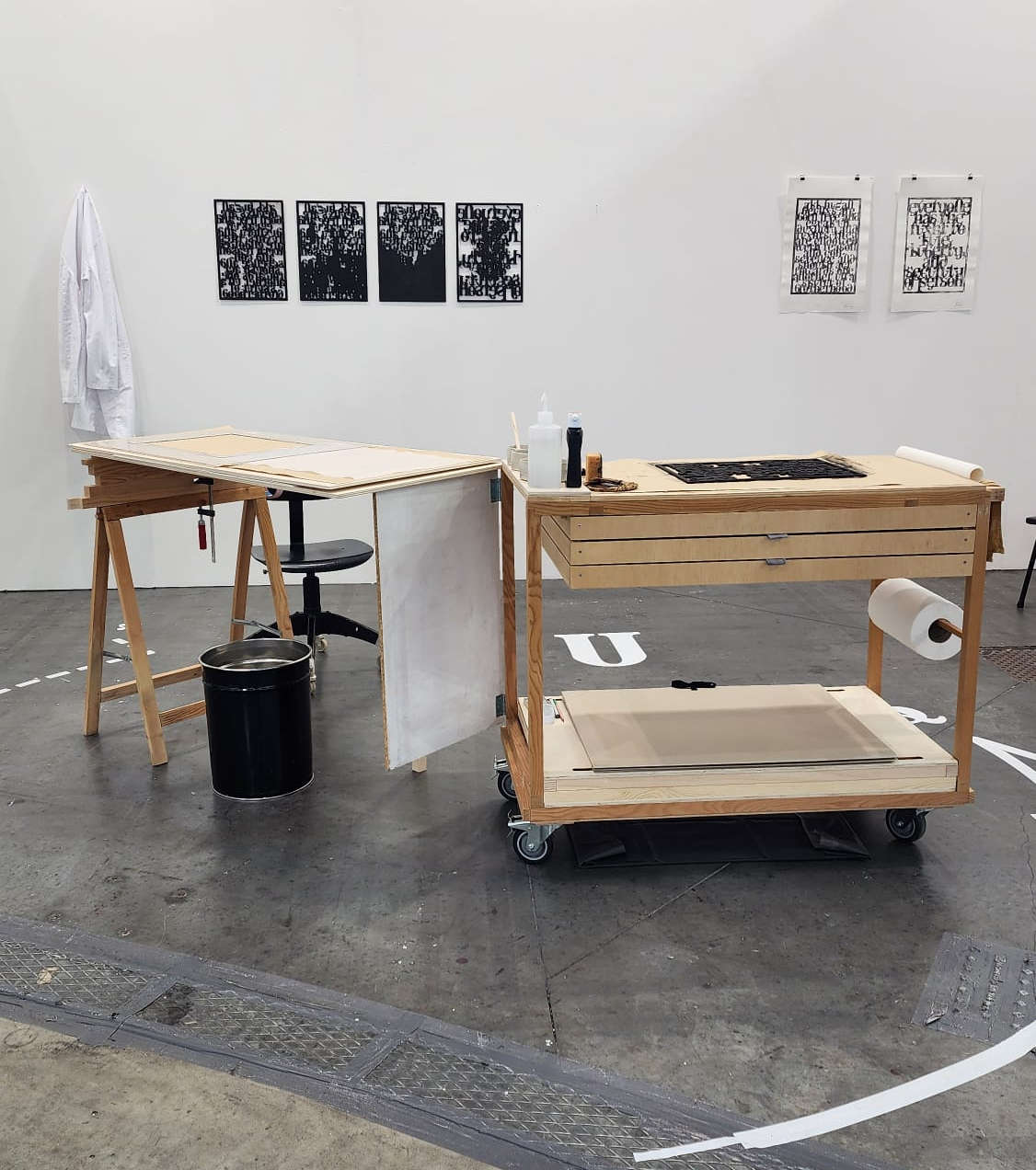
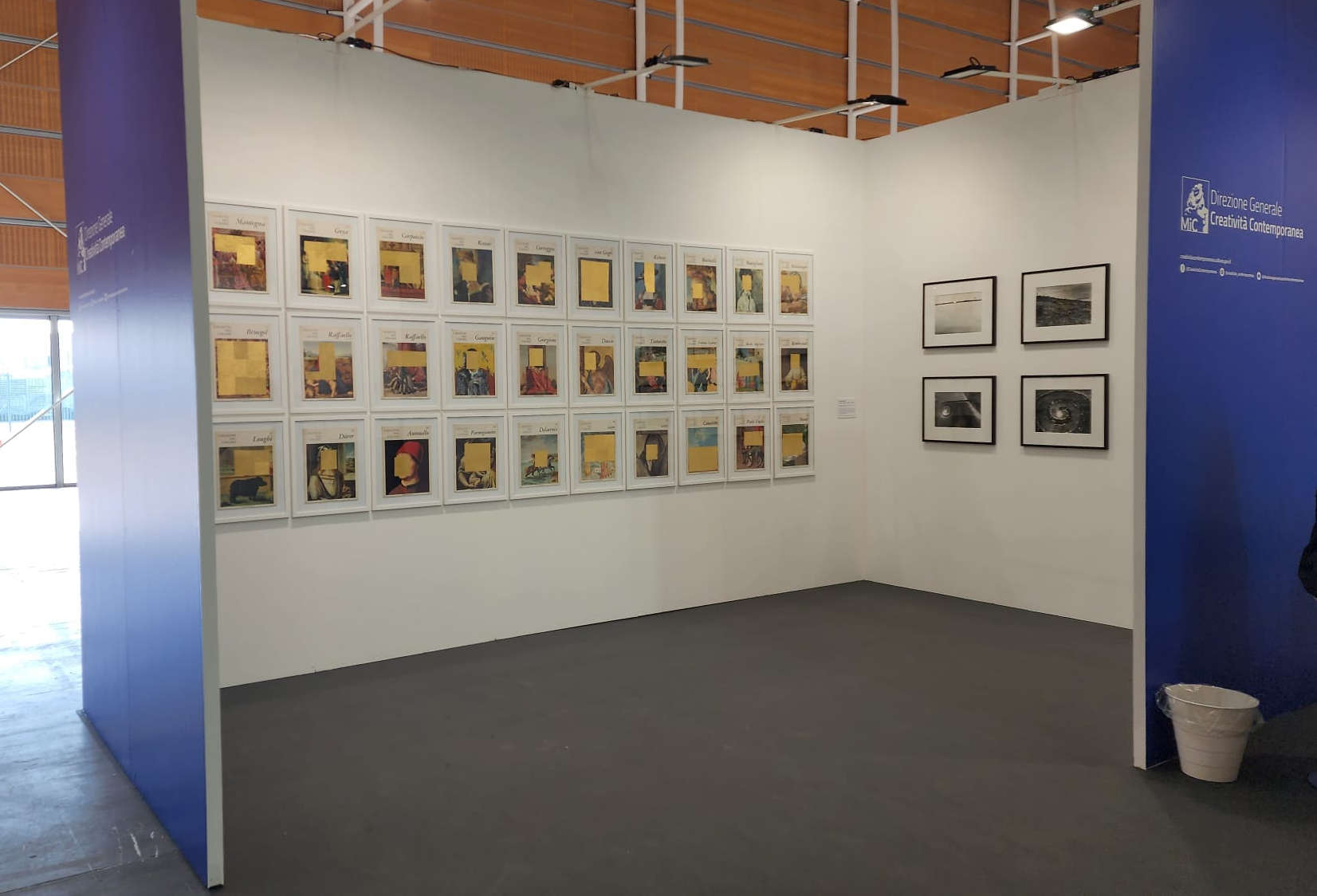
Far from excellent, apart from a few exceptions, the contemporary that should be one of the souls of a fair that this year seemed more bolder than usual, sluggish, a faded photocopy of the last two editions, jammed inside a place where one always has to elbow one’s way around to see the works, a place unsuitable for a fair that aims to attract thousands of visitors in a few days, that aims to exhibit first-rate works, that aims to appeal to a dynamic collector: most intense moment at six o’clock in the afternoon on Wednesday with custodians and security guards jostling back and forth between doors like pinball marbles to close off access to the fair in an attempt, later proved futile, to stop the visitor who took away a Calzolari folio from the Costa Gallery booth. To date, the loot has still not been returned, despite the fact that the gallery owner did not hesitate to even offer a drink to the thief, if of course he was not a skilled Peruggia but more simply a clumsy visitor who misunderstood about Calzolari’s Dark Ballad sheets mistaking them for souvenirs “to take away.”
If anything, the clumsy visitor should have been directed to Artissima, where he could have taken away as many sheets as he wanted if he had visited the booth of the Petra Seiser gallery, all set up as a small cottage industry of prêt-à-porter prints signed by Isabella Kohlhuber, an Austrian artist born in 1982 who distributes her prints made in collaboration with visitors for the modest sum of 200 euros. Practically the cost of a postcard. Instructions for use: contact the gallery owner to purchase the card. Drop the 200 euros. Select a matrix by Isabella Kohlhuber (or rather, a stencil, otherwise the public will not understand). Five stencils are available with two articles from the Universal Declaration of Human Rights, declined in convenient variations. Prepare the print after wearing protective coats and gloves to avoid staining your paletot, generously provided by the gallery. The gallery management disclaims any responsibility for improper use of equipment that could result in permanent stains and damage to your clothing. Allow 30 minutes for drying. Pick up the print, packaged in elegant 50-by-70-centimeter flat cardboard folder. In short, there is a lot of talk about participatory art, and here it is the audience that makes the art themselves and takes it home. It is also one of the few truly performative moments of this Artissima: here, it must be said that fortunately the performances have disappeared almost completely. This year, no models solfying stuck to the walls of the booths, no artists wandering around the fair carrying tubes, no flocks of visitors zomping behind the ringleader to imitate the sound of rain. He says the market is in crisis, there is to sell, no time for antics.
What is being sold then? The same things as always. An Artissima 2024 is not that different from an Artissima 2023, an Artissima 2022, an Artissima 2021 and so on. The biggest galleries are betting on the safe, the guaranteed, the big names: there is no shortage of the usual barrowloads of Arte Povera (although this year perhaps a little less than in past years), because we are in Turin and therefore exhibiting the poverists becomes a constitutional obligation (parenthesis: the same thing, in an even more persistent form, happens as always among the booths of Apart where, pass the Piedmontese galleries as well, but even the few who come from outside the region industriously flood the Promotrice building with tons of Delleani’s, Follini’s, Reycend’s and colleagues: for fans of the genre a true paradise, for everyone else a real ball-grinder). The lesser galleries that have engaged and researched in the past years now reap the results without giving the context a big shake. The more experimental galleries offer cooled, timid, lukewarm novelties: one should not upset the potential buyer too much. So there were few new things at Artissima: among the debuts here is the evocative painting of 20-year-old Giuseppe Francalanza at Vin Vin’s booth, the ceramic receipts of 20-year-old Camilla Gurgone from Viasaterna, the landscapes of 30-year-old Francesco Cima at Amanita’s booth, the dreamlike canvases of 40-year-old Polish artist Rafal Topolewski at Alice Amati’s booth, a first time at Artissima for both artist and gallery. And little else. Young people few. Experimentation few. Boredom much. A disappointing fair, monotonous, boring, fixed, immobile.
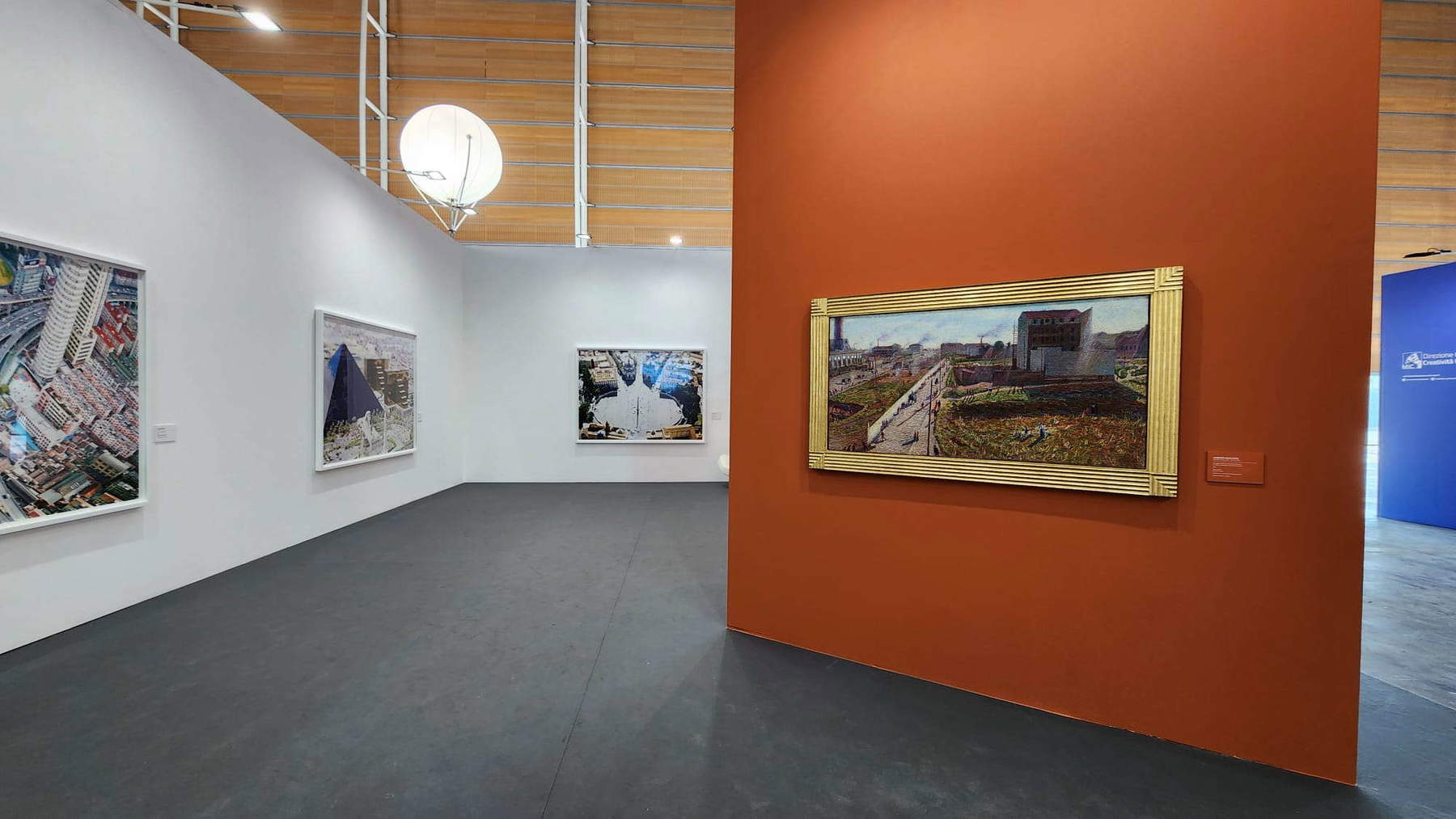
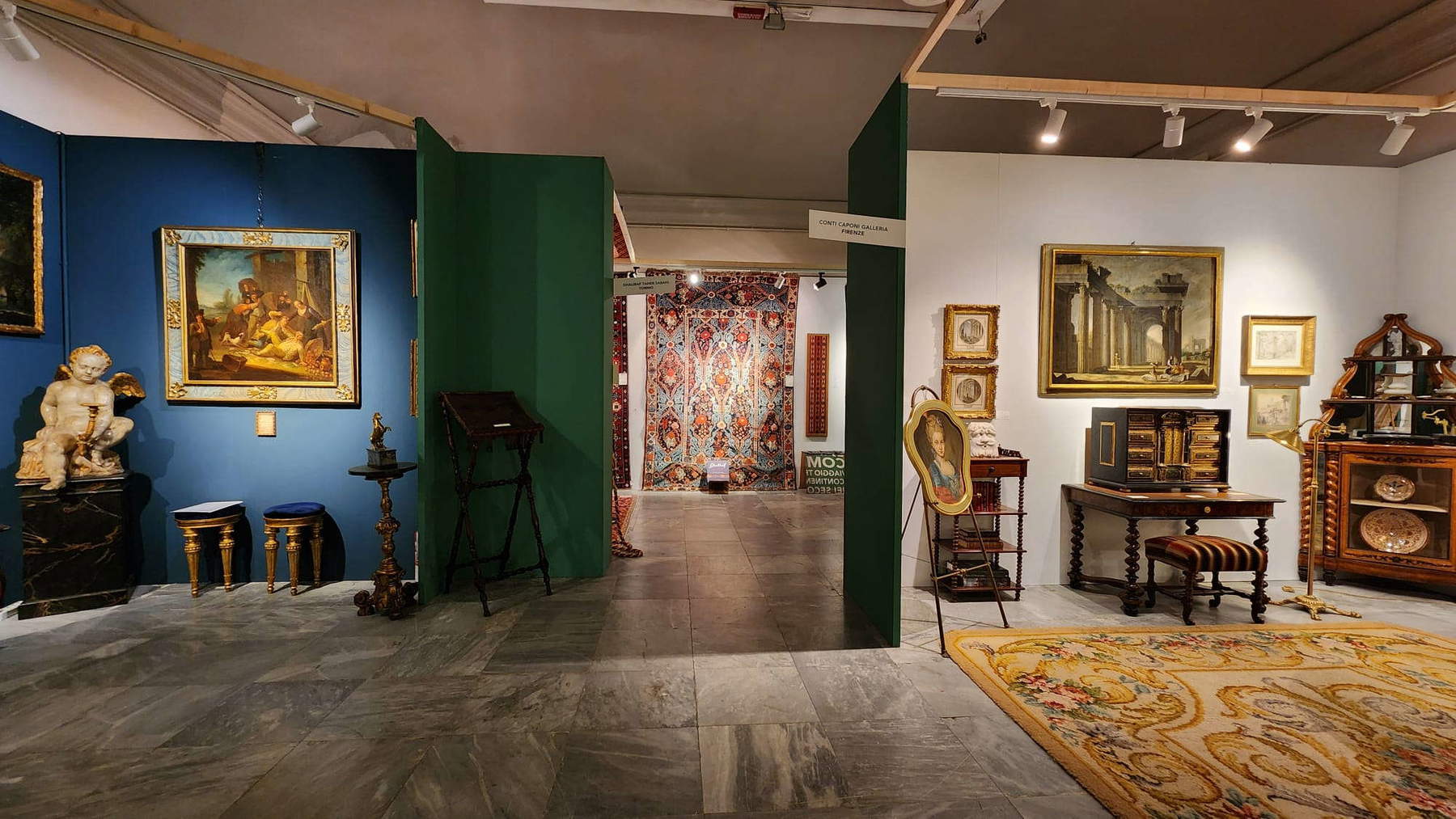
It’s no better a short distance away. Paratissima has a new venue and is experiencing a transitional phase toward what should be its permanent home. On the The Others front, queues at the entrance, as everywhere else for that matter, to see a discontinuous fair, with a so-called curatorial board that is not clear exactly what it has curated, since it seems to be at the market (set up, however, inside spaces that are even more cramped than those of Flashback). The few bright flashes (among the not many: Cluster Contemporary with a monograph by painter Giuseppe Sciortino, the Dutch Contour Gallery with a selection of works by very young Lithuanian women artists, Area B with an Antonio Bardini and an Irene Balia in search of momentum) do not lift a selection that plays down: there is a painter who paints abandoned factories (like those of Andrea Chiesi, but more childlike), there are those who make canvases that zoom in on body parts (like those of Chiara Enzo, but more stunted), there are those who paint plants in unreal colors on neutral backgrounds (like those of Alexandra Barth on view at Loom’s booth at Artissima, but more cheesy), there’s the geometric abstractionist imitating Soldati and Reggiani, there’s the scholastic impressionist, there’s theanimalier, there’s everything, there’s even one who builds boobs, noses, eyes and ears out of compositions of colored toothpicks. Basically the poor and somewhat truculent cousin of South African Chris Soal, the Michelangelo of toothpicks who raged at Artissima in past editions. And yet, speaking of Africans, even among the international stands one gets the feeling of seeing not so exciting proposals.
Yet isn’t Artissima, he says, supposed to be the quintessential experimental fair? Is that really all there is to it? Is it turning - help! - into a commercial fair? Yes, there is quality, and we would also like to see that this is not the case, indeed: buyers are now looking for more and more quality. It is like a very good restaurant that, once a certain menu is established, maintains it to the bitter end over the years. Which is perfectly fine, of course: there are after all those who prefer to go to the same place over the years and eat the same things. But at that point can the restaurant still sell itself as a beacon of research and experimentation? Matter of secondary importance, anyway: the gallery owner has to make a profit, in the morning at the pizzeria it’s not like he can go there with experimentations. Fairs are primarily for selling. And it’s not even certain that in the end galleries actually succeed in selling at fairs. So who dares to do research, who takes the trouble to invest without any guarantee of a return, who dares to venture into theunknown when everyone says the public buys less but better, when there is a Covid that threatens to upset the cards, when there is a cooling market, when there is a tense international environment? And all the more so at the fair, where there are gallerists who see amounts of audience that they can’t see in a year in the gallery. Not that it’s better out there, of course: it’s not like once you stop the fair then you start looking for something new (or, be that as it may, to give birth to something new). So many gallerists live on rents, so many artists live on social media, disconnected from the present, and no one who avoids us the usual post-fair made, also, with stencils: beautiful fair, beautiful works, everything went well, we sold (those who do not sell, understandably do not declare it even under torture: at most, if they are really in the mood to grant a generous impetus, they ask for publication anonymously). Who, after all, has an interest in changing the vulgate? The gallerists? The curators for whom fairs serve as big employment offices? The trade magazines? Better to tell themselves that all is well. Among the rare exceptions, I commend Nicola Mafessoni of Loom (one of the most curious and interesting booths, moreover) who writes in ArtsLife that he can’t wait to go home (“Artissima [...] should be the Italian fair of the avant-garde and research but, looking at the key areas, always dominated by the usual known names, it looks more and more like the fair of the caryatids.”)
Of course, there are also many things going right. In Turin there is a large ecosystem of institutional players who buy, buy a lot, care, and offer sap to the museums and institutes in the area (GAM, Castello di Rivoli, Museo Ettore Fico, Fondazione Merz, Fondazione Sandretto and others), which do not fail to make their support felt. This year for the first time, the General Directorate for Contemporary Creativity of the Ministry of Culture also participated in Artissima, demonstrating an unprecedented sensitivity, and showing up with an excellent stand all dedicated to Flavio Favelli’s Masters of Color . And Intesa Sanpaolo arrived at Artissima with a delightful mini-exhibition built around a masterpiece by Boccioni(Officine a Porta Romana), a view by Van Wittel and a capriccio by Panini, put together with three photographs by Olivo Barbieri, to address the theme of changing cities. Too bad that since a work by Boccioni (not to mention a work by Van Wittel or a Capriccio by Panini... !) an object foreign to a good part of the undergrowth that crowdsArt World, few people saw the exhibition. Want to put how much more interesting and Instagrammable is yet another neon sign, this time saying “You are guests”? This year, perhaps the Turinese on the A55 queuing at times for heavy traffic between Corso Francia and the A21 junction wasted their time more profitably than their fellow citizens queuing at the fair entrances. Better to escape the city and enjoy flashes and warmth of this unlikely climate change sunshine.
Warning: the translation into English of the original Italian article was created using automatic tools. We undertake to review all articles, but we do not guarantee the total absence of inaccuracies in the translation due to the program. You can find the original by clicking on the ITA button. If you find any mistake,please contact us.




























